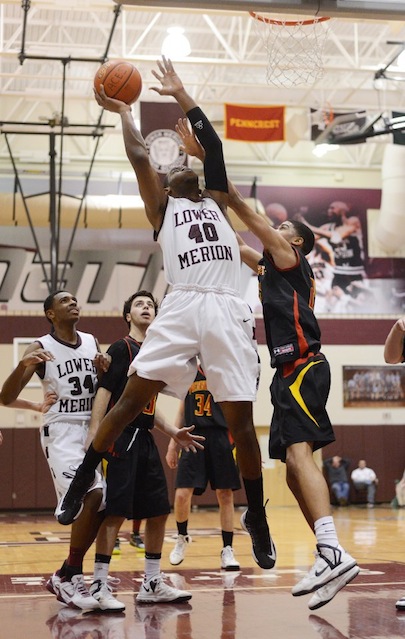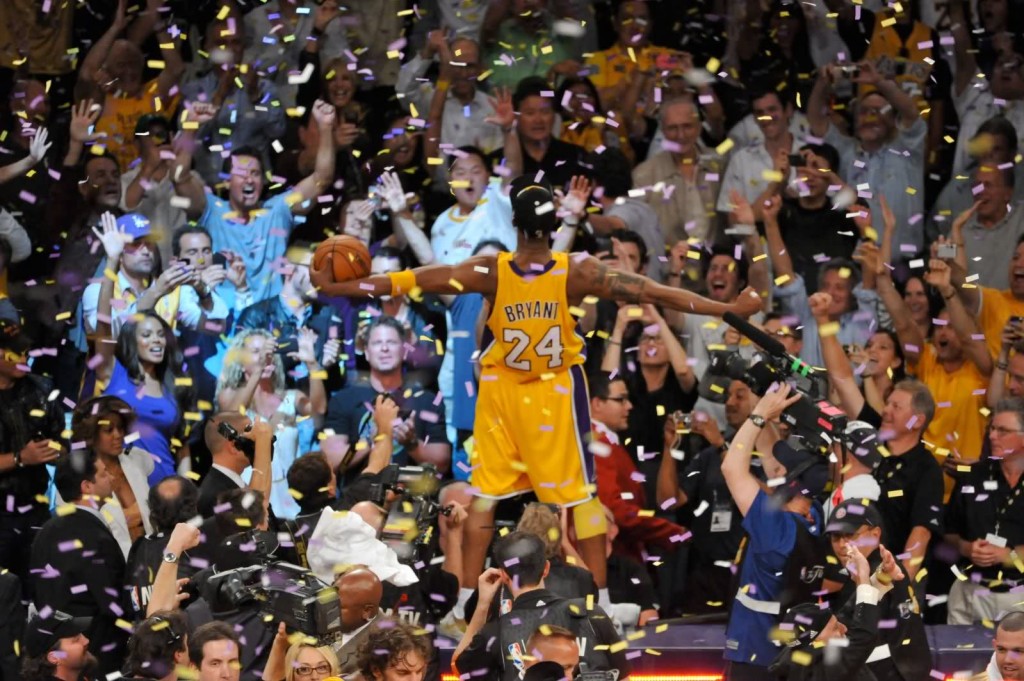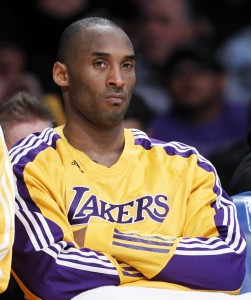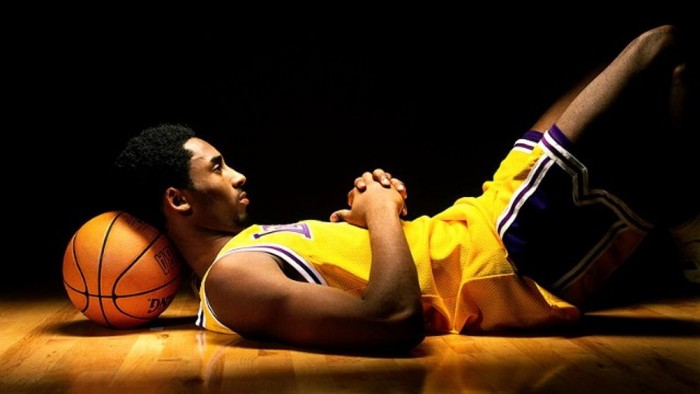Perhaps the most exuberant moment of my high school career occurred on a frigid December evening. It was two nights before my seventeenth birthday when my basketball team beat invincible high school superstar Kobe Bryant’s – and my mother’s – alma mater, powerhouse Lower Merion High School, a gem of a public school, posing as an academy, and possessing the scholastic and basketball credentials and opulence to pass for one. I have grown to despise Lower Merion for many reasons. First, my team suffered six losses to the Aces in four years, usually via demoralizing blowouts. Coincidentally, each of the three years they beat us in the regular season, they also beat us in the playoffs, on their home floor – a sparkling, raucous gym named after Kobe himself, the Los Angeles Lakers’ merciless late-game assassin and future Hall of Famer, turned local legend and $500,000 donor responsible for financing part of the project1.

Lower Merion’s Yohanny Dalembert, whose brother played in the NBA for several years, scores a basket against my over-matched high school teammates, as Kobe’s mural looks on and a Penncrest banner hangs in the distance. LM defeated us 70-42 on its home court, then went on to capture the PIAA State Championship.
Anyone familiar with the dynamics of basketball fandom understands the hatred harbored towards the Duke Blue Devils. ESPN even made a film which attempted to unpeel the layers of America’s resentment for Christian Laettner, who epitomized Duke’s eternal preppy, pretty-boy image. Duke has constructed an exemplary program founded on a tradition of discipline, intelligence, mental toughness, and calm, cool intensity, led by a masterful coach who attracts marquee recruits every year, molds them into fundamentally sound, sharp leaders on the court, then sits passively on the sidelines, quietly overseeing their methodical deconstruction of their opponent. I grew up wearing Carolina blue, so, naturally, I hate Duke; but I respect the cohesive, polished machine they have built. Lower Merion is Duke and Duke is Lower Merion, sans the recruiting violations and shady roster “modifications” (LM allegedly provided housing for out-of-town prodigies to live within the school district and thus be eligible to suit up for the team.)
Taking an honest look at the origins of my disdain for these two royal programs, I painfully acknowledge that it is driven by envy. They breed success at LM and at Duke; they own everything that I, and so many others, desire: victory, respect cultivated by tradition, and – resisting the urge to strangle myself as I write this – yes, class. The exclusivity and status associated with LM and Duke are what create the agony felt by those who aren’t part of the club. They were always, and always will be, Goliath, and Penncrest – my high school – no matter how many times we upset them on our home court in front of 300 of our screaming classmates, will always be David.
In the NBA, the glamorous franchise people love to hate resides in downtown Los Angeles and rocks purple and gold, the most ostentatious colors on the spectrum. For generations, the allure of Hollywood combined with a championship brand attracted the highest profile names in basketball. The cliché of LA’s fascination with celebrity entertainers, performers, and athletes accurately characterizes the Lakers’ star-studded history. Before the 1960-61 season, the team relocated from polite, modest, blue-collar Minneapolis to laid back, luxurious, grandiose Southern California2. In the 1960s and 1970s, Elgin Baylor and Jerry West, whose silhouette is immortalized on the NBA logo, then four-time league MVP Wilt Chamberlain, the most dominant, larger-than-life player in basketball history – a man who forced the NBA to adjust its rules permanently to neutralize his demolition of hapless opponents, and who claimed to have slept with over 20,000 different women in his lifetime – brought the Purple and Gold to prominence as they conquered the league’s Western Conference and established a timeless rivalry with the East Coast’s heavyweight: the Boston Celtics3.

The Lakers’ stars of the 1960s-’80s. From left to right, Wilt Chamberlain, Jerry West, Magic Johnson, Elgin Baylor, Kareem Adbul-Jabbar. These players elevated the Purple and Gold to elite status in the NBA ranks.
In 1979, the Lakers drafted Magic Johnson, pairing him with Kareem Abdul-Jabbar, the NBA’s all-time leader in points, MVP awards, and All-Star selections4. The “Showtime” Lakers were NBA champions for half of the 1980s, winning the Finals five times in nine years5. Hall of Fame coach and team architect Pat Riley, famous for his Godfather-like appearance and persona, supervised as Magic, Kareem, and numerous other Hall of Fame players embarrassed opposing teams with a flashy, up-tempo style which served as a metaphor for the city’s theatrical culture. After a decade of mediocrity, the team drafted Kobe fresh off his State Championship at Lower Merion, then acquired freight train Shaquille O’Neal, the modern equivalent of Chamberlain. The duo won three consecutive championships beginning in 2001, then after Shaq’s departure due to feuds with Kobe over who would become the team’s “alpha dog,” Kobe emerged as the NBA’s premier scorer, exemplified by his eighty-one point game in January, 20066. It was the second-largest single-game scoring outburst in league history, failing to eclipse only Wilt’s 100-point game in 19627. As Kobe matured into a calculated veteran, the Lakers strengthened their roster and won two more titles in 2009 and 2010. Then the wheels began to fall off.
I have never been to Los Angeles, or even the state of California. The Lakers are the NBA version of my basketball nemeses: Lower Merion and Duke. For the duration of their existence, they have walked all over the competition and established a multifaceted identity, with shades of Southern California pick-up basketball, NBA royalty, first-class professionalism, and Hollywood’s celebrity culture all making an appearance in the spotlight. They fit my earlier description of Duke perfectly. The organization is culturally iconic largely because of its polarizing effect on fans. Like many people who embrace the stereotype of humble hard-worker, I don’t resonate personally with the showmanship and glitz of LA, nor do I with the “Showtime” groove the team has adopted over the years; my playing style was hard-nosed and scrappy; I possessed less talent and athleticism than most of the players I faced, so I needed to claw and fight to compete. Fans almost never associate this approach to the game with the Lakers. Everything about them dictates that I, just as many other Americans who distance themselves from decadent LA culture, should hate their entire existence, but I adore them like none of my other preferred teams. I am audaciously proud to be a Lakers fan. I thoroughly enjoy bragging about the sixteen championships in which I played no part. Few phenomena in sports satisfy me more than asking LeBron James fans how he can justly be compared to Kobe when he is 2-4 in the Finals and Kobe is 5-2, and then admiring the blank stare on their face as they search for an inevitably insufficient rebuttal.

Minutes after winning his fifth NBA Championship, Kobe Bryant shares an intense, celebratory moment with fans.
However, the past few seasons have been torturous. The Lakers were odds-on favorites to bring home the title again in 2011, thus completing their second three-peat of the Kobe and Phil Jackson era. They fell to the Dallas Mavericks in the Western Conference Semifinals in an ugly four-game sweep. They exited in the same round of the playoffs the following season, then acquired Steve Nash, who was past his prime and plagued with injuries, and Dwight Howard, who was not mentally or physically tough enough to represent the Lakers organization, and decided to depart for Houston after the frustrating season, in which the Lakers barely made the playoffs. In the 2013-14 campaign, Kobe played only six games as he recovered from a torn Achilles and nursed various other injuries. He returned to action during the Lakers’ dismal season last year, but tore his rotator cuff around midseason and was ruled out for the year’s remainder.
The team was humiliatingly awful last year. Their record of 21-61 was the worst in the franchise’s history, as they missed the playoffs for the second year in a row, but only the third time in two decades. This season’s 2-14 start has indicated more of the same. A glorious franchise once allergic to losing, the Lakers have entered an excruciating tailspin and now sport a roster full of misfit players who have never won anything team-oriented at the professional level8.
A simple search of articles pertaining to the present-day Lakers yields cringe-worthy headlines, including, but not limited to: Bleacher Report‘s apocalyptic, “9 Failed Moves that Contributed to Los Angeles Lakers Downfall,” Grantland‘s comically, yet tragically, mocking, “An NBA Detective Story: Who in the Lakers Organization Knows They’re Tanking?” its desperate, “Kobe’s Beautiful Madness: Understanding the Lakers’ Absurd Present and Unknowable Future,” its nostalgic, twisted doomsday, “Wolf on the Rock: The Ludicrous, Glorious Doom of Kobe Bryant,” and Bleacher Report‘s declaratively optimistic, “Maybe the Los Angeles Lakers Aren’t Screwed After All.” Perspectives range from the LA Times’, “Lakers defense is offensive,” to this recent feature on SBNation: “The Lakers are in ruins, and there is no easy fix.” Finally, lest I forget the pathetic: “‘They’re trying. It’s not like they’re not trying,’ (former head coach notorious for his disregard for defensive proficiency, Mike) D’Antoni said.” Barring a series of miracles, this year, the team will experience a three-year playoff drought for the first time ever9. In other words, this is literally the worst time in history to be a Lakers fan.

One of many Kobe facial expressions which characterizes the feelings of Lakers fans as the team experiences turmoil and loses most of the games it plays.
Yet, despite this unprecedented atrocity, despite the childish incompetence of the late legendary owner Jerry Buss’s children, who now hold the reigns in the front office, and despite the fact that my best friend, a Spurs fan, will be able to harass me about my team’s ineptitude for several years to come, I still find myself grateful and appreciative of the obscenely rich history of the organization, and the spectacle it has developed through decades of manufacturing and nurturing talent. I have always been enchanted by Southern California, and the Lakers play a large role in my intrigue. They suck right now, but millions of people remain loyal, if not rational, about what the future holds. The body of Kobe Bryant, whom I have idolized since I could make a basket on a ten-foot hoop, is breaking down, and he will be heading out the door before I know it. I might shed a tear when he does, because I doubt we will ever again witness a player so monomaniacal about winning, so intrinsically competitive and ruthless, so brash, yet so cerebral, and so capable of channeling his core being into passionate artwork on the court.
The cast of characters filling out the roster and management positions rival that of the most outrageous Hollywood screenplay being translated onto the big screen just minutes down the road from the Staples Center. It includes the only two left-handed players to be picked in the top seven of the last two NBA Drafts – D’Angelo Russell and Julius Randle – as well as former All-Star, 7’2″ Roy Hibbert10; a luddite coach who won three titles as a player on Magic and Kareem’s “Showtime” teams, who prides himself on defense and old-school basketball, but has coached some of the worst defensive teams in NBA history and is skeptical of the undeniable value of the three-point shot in today’s NBA11; and two identical players – Lou Williams and LA native Nick “Swaggy P” Young – who are in the NBA for one reason only: they can put the ball in the bucket12.
Grantland‘s Zach Lowe summarized the current paradoxical state of the Lakers: “The Lakers are far from the championship level to which they’ve become accustomed. They are in the wilderness, really, for the first time in the history of the franchise. There is no obvious way out — yet. In the meantime, they are still one of the best shows in the league — in their own way13.” For disgruntled yet cocky fans who appreciate poor shot selection and are willing to gloss over a plethora of defensive lapses, his final sentence may provide a cheap consolation.

Lakers rookie D’Angelo Russell admires several of the Lakers’ sixteen championship trophies. Lakers fans are hoping he will usher in a new era of Purple and Gold dominance as the franchise transitions to life post-Kobe.
Even though this team will give me headaches with their nauseating play on the court, the most accurate headline I stumbled across may be this one: Grantland‘s strangely uplifting, “The Lakers and the Miracle of No Expectations.” Who am I kidding? I have no reason to complain. Lakers fans, as we usually do, are going to get the last laugh14. This pitiful team will be entertaining as hell. At points this season, a Purple and Gold Hollywood soap opera will unfold before the rest of the NBA, and everyone will wonder why the sports media care15. They care because it’s the Lakers; we will never be irrelevant, no matter how bad we are16. The national fan base will stand behind this sorry excuse for a team, upholding its significance till the end, while the fans of twenty-nine other teams continue hating us because we have everything they covet, as their teams file yet another year into the archives – the ones that only get dug up when someone needs to prove empirically that the LA Lakers sit perched atop a throne at the pinnacle of the NBA.
2 Los Angeles Lakers Franchise Index
5 Los Angeles Lakers Franchise Index
6 Wolf on the Rock: The Ludicrous, Glorious Doom of Kobe Bryant
8 The Lakers are in ruins, and there is no easy fix
9 Los Angeles Lakers Franchise Index
10 The Lakers are in ruins, and there is no easy fix
11 An NBA Detective Story: Who in the Lakers Organization Knows They’re Tanking?
12 Maybe the Los Angeles Lakers Aren’t Screwed After All
13 Kobe’s Beautiful Madness: Understanding the Lakers’ Absurd Present and Unknowable Future
14 The Lakers and the Miracle of No Expectations
15 Triangle All-Stars: Kobe Bryant, the Perfect Teammate
16 The Post-apocalyptic Lakers are the NBA’s Most Entertaining Team, and We Have Proof
Works Cited:
